Painting and Sculpture
From the very first stages of independence, the study of arts in Argentina was encouraged by the presence of foreign artists, such as the Englishman Emeric Essex Vidal, the Frenchmen Pellegrini, Palliere and Monvoisin, the German Rugendas and the Italians Descalzi, Verazzi and Manzoni, who had an enormous influence in the development of the arts. The first important Argentine artist was Carlos Morel. Prilidiano Pueyrredón and Cándido López were the first highly-renowned Argentine painters.
From 1850 to 1910, Eduardo Sivori, Eduardo Schiaffino, Martin Malharro, Angel della Valle and Ernesto De la Carcova initiated great international interest in Argentine paintings. They also founded the Association for the Development of Fine Arts, which continues its important work even today.
On the Centenary of the May revolution, in 1910, Argentina displayed its cultural splendour. Argentine painting was constantly being transformed; the arival of artists such as Fernando Fader, Pio Collivadino, Césareo Bernaldo de Quirós, Cupertino del Campo, and Ripamonte, marked a new era in painting.
Following on from these came other important artists including Emilio Caraffa, Antonio Alice, Alfredo Guido, Miguel Victorica, Ana Weiss de Rossi, Augusto Marteau, Eugenio Daneri, Basaldua, and Guillermo Butler. Benito Quinquela Martin, painted outstanding images of the port life at Riachuelo, while Emilio Pettoruti opened his first exhibition in 1924 under the name “Cubism in Our Country. Eneas Spilimbergo, Gomez Cornet, Carlos Alonso, Juan Carlos Castagnino, Xul Solar, Raúl Soldi, Antonio Berni, Raquel Forner, Guillermo Roux, Kuitka are some of the contemporary painters who inspired most of the pictorial activity.
Many people in Argentina admire the sculptural production that flows from more than a hundred years' work of artists like Francisco Cafferatta with his piece of art "The Slave,” Lucio Correa Morales with his "Falucho," and Rogelio Ytutia with his masterpiece "Canto al Trabajo." "Bernardino Rivadavia's mausoleum” and “Manuel Dorrego's monument" are part of the cultural itinerary that everybody visits when in Buenos Aires. Lola Mora and Luisa Isabel Isella were two outstanding women during this period who made works from hard material. Pablo Curattella Manes, Hernán Cullen Ayerza, Luis Fioravanti, Alfredo Bigatti and Pablo Tosto also made many important sculptures

